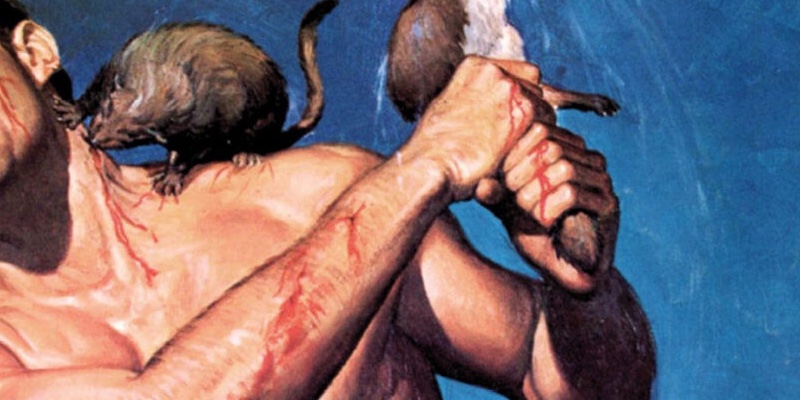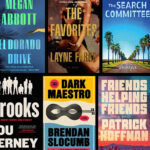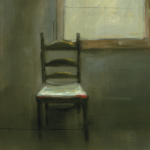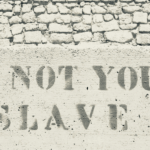If I walked up to you and whispered, “Weasels Ripped My Flesh,” would you think:
I was referring to the 1970 album of that name by Frank Zappa and the Mothers of Invention?
I desperately needed medical assistance of some kind?
I was referring to the classic men’s adventure magazines of the 1950s-70s, including the 1956 issue of Man’s Life that featured a story of the same name?
Thanks to a small group of fans, collectors, preservationists and publishers led by Robert Deis, the recognition of and appreciation for men’s adventure magazines (MAMs for short, but also sometimes referred to as “sweat mags” and other colorful nicknames) is growing.
Nearly a half-century after the last of those magazines disappeared from newsstands, Deis and like-minded devotees of this mostly forgotten media – which featured the hard-bitten writing of “Godfather” scribe Mario Puzo, crime writers like Lawrence Block, fantasists like Harlan Ellison, science fiction authors like Robert Silverberg and many others – are publishing periodicals and anthologies of the visceral stories and art that entertained millions while remaining below the radar of classic and so-called classy literature and publications.
When I was a kid, I’d go to the grocery store with my dad, who did the shopping for the family. I don’t remember all that much about the grocery aisles, but I sure remember the magazine rack and the men’s adventure magazines on it. Tucked away not far from the elevated manager’s station, the rack that not only offered comic books, the Saturday Evening Post, Time and Newsweek, but dozens of these disreputable looking mags featuring vivid, full-color art of hitmen, soldiers, adventurers and women, who were often nearly as scantily clad as the bare-chested men.
If you’re not old enough to remember the time of MAMs, they were a group of as many as 160 magazines, from publishers big and small, that printed gritty, titillating and outlandish “true” (but usually not) tales of manly men (and some heroic women) battling Nazis, bears, criminals, sharks, Bigfoot, rhinos and, yes, weasels. Along with a legion of other small, biting-prone animals.
Zappa recognized the shock potential of MAMs. So did guys who read them as they sat in barber shops and hung out in their suburban garages. Shock value and camp value aside, the MAMs were a treasure trove of crime, war and action writing. Some of the authors’ names, including those cited here, are well known, while others are still masked by pen names.
Writing and drawing and painting, editing too, I’d guess, for MAMs was not any more highly respected in some circles than working for comic book publishers like Marvel and DC. It’s possible the titles of the magazines helped relegate them to a niche: Man’s Life, Men Today, Man’s Story, Men in Conflict, Man’s Action, True Men … you get the idea.
Deis notes that among the devotees of the MAMs was Ed Gein, who was a one-man lurid story all by himself. Gein was the grave-robber and killer who inspired author Robert Bloch to write “Psycho.” To be fair to the magazines, Gein wasn’t the only avid reader, and I’d bet that copies were stored in cardboard boxes under a lot of beds over the decades.
Like 1950s horror comics from EC and other publishers, men’s adventure magazines have been enjoying renewed appreciation and attention in recent years, thanks to a couple of critical reappraisals, a series of publications including Men’s Adventure Quarterly magazine and anthologies that celebrate not only the wild writing and art but also the history and behind-the-scenes stories of the New York magazine publishing world.
A formula – and it worked
Although the old men’s magazines have won some renewed attention since the early 2000s, the publications reprinting vintage stories and art have grown in popularity in just the past decade. Deis and Wyatt Doyle of the New Texture indie publisher have produced handsome anthologies and art books. Deis and Doyle published the men’s adventure magazine anthology and overview “Weasels Ripped My Flesh” in 2013 with the contributions of Josh Alan Friedman, whose father Bruce Jay Friedman was a MAMs editor in the 1950s and 1960s. They’ve released 20 illustrated story anthologies and 12 issues so far of Men’s Adventure Quarterly, a thick, slick magazine from Deis and Bill Cunningham of Pulp 2.0 Press.
Looking at the articles and covers reproduced by Deis and his cohorts, one can’t help but wonder if there were some kind of drawing of slips of paper from a hat that helped determine what headlines – and stories – would be written. Decades later, the headlines suggest a kind of Mad Libs or refrigerator-magnet poetry approach: MACHO PROTAGONIST who DESTROYED/ESCAPED from NAZI/RUSSIAN/JUNGLE DEATH CAMP to save SUBURBAN WIVES CAUGHT BY SEX TRAFFICKERS because, face it, they had to get the sex element in there.
For example, I’ll cite one of several stories cited on the cover of True Action magazine’s June 1961 issue; “The Soldier of Fortune Who Rules Russia’s Camp of Banished Wives.”
Plainly, these stories had it all.
Newsstands and supermarket racks are mostly gone now, although there are magazine racks at bookstores like Barnes & Noble. But they’re a no-macho-man’s land, devoid of the non-stop action and cheesecake and beefcake of the MAMs. There’s a serious shortage of leering Nazi torturers and barely-clad women firing machine guns.
Not to mention flesh-ripping weasels.
The original “Weasels Ripped My Flesh,” what Deis calls the most famous men’s adventure magazine story ever, is a terse suspense story about a man defending his barn full of ducks from ravenous weasels. That might sound funny, but the story is anything but.
“Then, like some poor demented animal, I began spearing everything that moved before me,” the protagonist says of trying to fend off the weasels with a pitchfork. “I saw the long, double-pronged steel gouge through squirming bodies … one … two … four! I was out of my mind with pain and grief, yet I didn’t stop skewering them even as I drove the pitchfork into my own leg to stop them.”
Afterward, he looks back at the ordeal and what followed, including extensive surgery to try to heal his many, many bite wounds. “Plastic surgery and the best of care gave me a face that seemed strange to me.”
What’s even more startling than the story itself and the fame that’s followed it over nearly 70 years? As Deis notes in the “Weasels” anthology, the name of the author who wrote the original story, Mike Kamens, is almost certainly a pen name. The real name of the writer who all but spawned a publishing concern that’s known to this day is himself unknown.
Comic book parallels
The stories in MAMs ran the gamut from westerns to war to tales of adventurers and people who were just in the wrong place at the wrong time – but managed to survive against the odds.
The MAMs had a lot in common with pulp magazines and comic books, including the legions of writers, editors and artists who didn’t mind the money but longed to break out and get into what was considered more “legitimate” forms of art and writing, like the advertising industry or mass-circulation magazines.
They also had in common Martin Goodman. If that name doesn’t ring a bell, consider that Goodman was a driving force in the New York periodical publishing world for decades. Goodman, who died in 1992, founded Magazine Management Company in the postwar years and the company distributed many men’s magazines. Goodman was also related by marriage to Stan Lee and hired him to run Timely Comics, which later became Marvel Comics and a pop culture touchstone.
Deis said the comics comparison wasn’t obvious but, “Like the great horror comics of the 1950s, EC Comics, MAMs are getting more artistic appreciation now than they did at the time of publication.”
Deis said he has about 6,000 original issues of the magazines, a collection put together over the decades. Some, like the issue featuring the notorious “Weasels,” are collector’s items. It’s fairly common to see individual issues offered for sale in online sites for $10 to $40 each, he said. The December 1961 issue of Argosy magazine “can cost hundreds,” he said. Why? It features a version of Ian Fleming’s James Bond adventure “Thunderball.”
The “Weasels” issue of Man’s Life, if it can even be found, can sell for as much as $400, Deis said.
‘Even the rhinos were nymphos’
The people who created men’s adventure magazines and the people who have resurrected them are serious appreciators of the writers and artists whose work is within the pages, but they acknowledge the humor – some intentional, some not – in the magazines and the genre.
There are few recountings of 1950s-1970s New York magazine publishing better than Bruce Jay Friedman’s appreciation, originally published in Rolling Stone in 1975 and reprinted in the “Weasels Ripped My Flesh” anthology and overview. It was also used in Friedman’s 2001 autobiography, also titled “Even the Rhinos Were Nymphos.” The title was a reference to two of the cliches of the men’s adventure magazines: wild animals and highly-sexed characters.
Friedman writes about the foibles of the business in hilarious fashion.
“It was at this point that the notion (occurred) of simply making up ‘true’ stories and publishing them with full documentation,” Friedman writes. Mario Puzo, years before he wrote “The Godfather,” was a master of creating decisive World War II raids and brutal campaigns that nobody had heard of. One feature for a magazine did actually draw from a real-life story about a Canadian “who died after a valiant death trek through Indochina.” The magazine’s writers spiced up the story with the addition of “jungle nymphos” who went along on the march.
Then when the magazine hit newsstands, the magazine learned that not only was the Canadian real, but he was the most popular minister in the Toronto area. The staff scrambled to try to head off disaster – and lawsuits.
This was many years before something could be looked up online, of course, and the scrambling included phone calls to Canada. Friedman called a reporter in Toronto and determined that the minister had subsequently died during a trek into the Canadian wilderness.
“I hollered out, ‘He went bear hunting and he’s dead!’
“A great cheer rang out and everyone went happily back to work.”
Asked if he believed men’s adventure magazines had transcended their original roles, Deis said, “For readers who bought them when they were published, all these various aspects of MAMs were both a source of escapist entertainment and a source of information about all kinds of topics, from history to current events to sex. For readers today, they are still a source of escapist entertainment, though many of the stories, covers and interior illustrations do seem unintentionally humorous. MAMs are also interesting in terms of what they reveal about mid-20th American culture.”

















